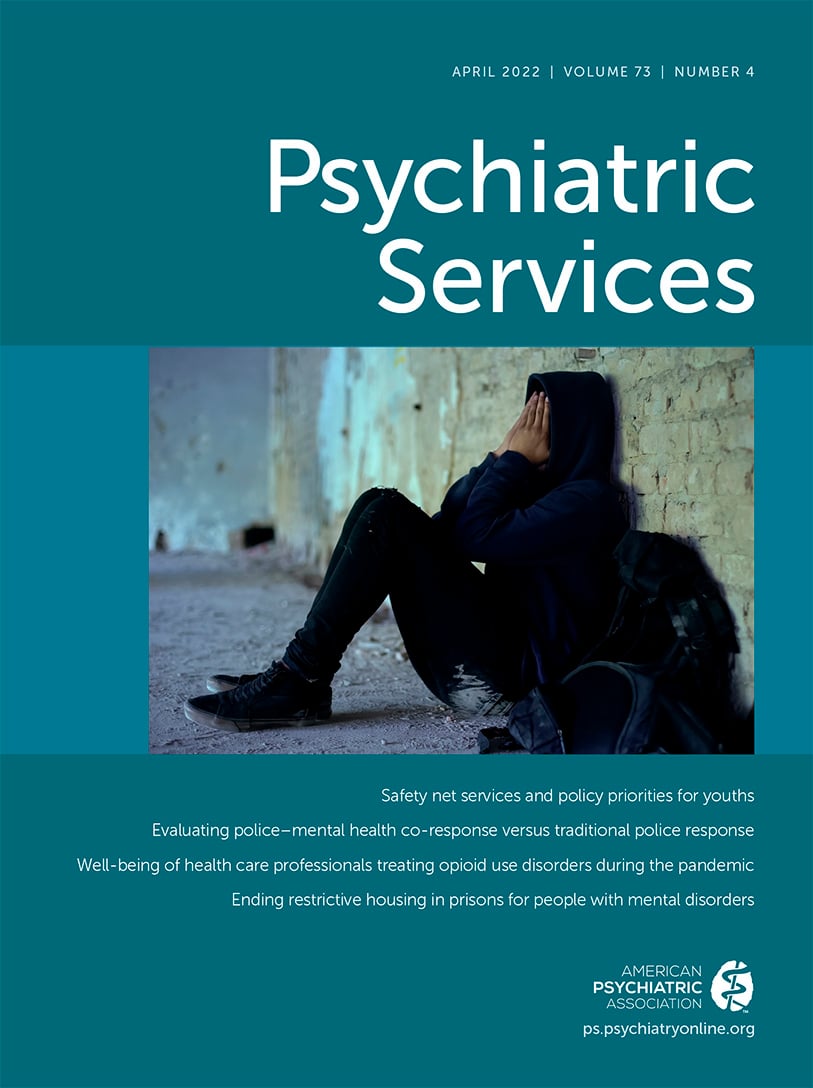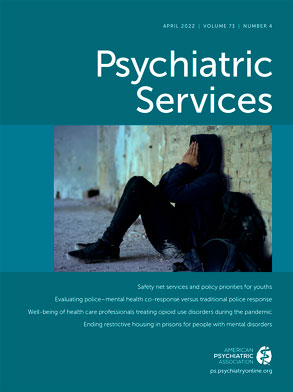In this issue, Purtle and colleagues (
1) provide a careful analysis of cross-sectional survey responses from 159 state and county behavioral health agency officials on the impacts of the COVID-19 pandemic on mental health services for youths. Many of the key findings are not surprising, such as the service challenges of telehealth equipment or Internet access, as well as the perceived negative mental health impacts on socially disadvantaged youths.
The surprising finding of the study is the low percentage of agency officials who perceive the pandemic as having a seriously negative impact on the receipt of youth services. Notably, only 15% of respondents indicated that the pandemic prevented youths from receiving needed mental health services, and only 12% believed there was a negative impact on the quality of services provided. In addition, only 15% believed there was a reduced supply of mental health services for youths. The online survey took place between September and October 2020. Since then, the pandemic has had two additional surges, which have prolonged the pandemic. Reading the analyses today, the concerns of the respondents seem considerably understated.
Purtle and colleagues indicate that access to care might not have suffered, owing to the rapid shift to telehealth models of care. What is not clear is the impact of the shift on service quality and the supply of service delivery. Although access to care is an important process measure and quality metric, additional quality measures are needed, including clinical outcomes through measurement-based care and patient-centered measures. In addition, the clinical impacts of the pandemic on youth mental health outcomes, such as hospitalizations, suicide, and toxicity or overdose deaths, will also need to be tracked over time. For example, early data suggest that youths from racial-ethnic minority groups currently have a higher suicide rate compared with prepandemic years.
Notably, service delivery for youths today is challenged to raise the quality of care in the face of workforce and staffing challenges, rising health care costs, and a shift toward value-based care. Youths receiving mental health care need better and more intensive care than baseline care currently provides, including clinical and wraparound care and home services. An example is early detection and coordinated specialty care that can affect the trajectory of care and outcomes in early psychosis.
Unfortunately, demand for services is rising while specialty training programs have not expanded nearly as quickly. The United States continues to be challenged by a lack of psychiatrists. We will have an estimated shortage of 14,280 to 31,091 psychiatrists by 2024 as well as a more rapidly aging workforce. This workforce shortage is coupled by rising health care costs for critical roles such as care coordinators, nurses, and clinicians, who are important in providing services to youths.
Advanced practice professionals such as nurse practitioners and physician assistants will likely be relied on for service delivery, but educational and supervision structures are needed to provide high-quality care and fidelity to existing models of care for new providers who may not have had psychiatric training. These structures are especially important for the unique demands of youth services.
Increases in health care costs are important to consider in community mental health settings. Although care may be available, critical jobs are unfilled, and the nation’s youths may wait longer to access that care. In addition, models of care are shifting due to pandemic precautions and outbreaks. High-intensity in-home care services are often paused to follow public health guidelines for infection prevention. This begs the question: how well can a remote community workforce adapt to deliver high-quality telehealth services?
Purtle and colleagues provide a national snapshot of youth mental health services during the first year of the COVID-19 pandemic. More data are needed to understand critical aspects of care in the pandemic, including quality beyond the role of access to care and trends in health care costs that may well constrain care. Many agencies may not be able to keep up with the significant financial burden of services delivery or sustain high-quality care for vulnerable youths over the coming years.

